11. Slugs, Hares, Warts and all
Some of the genuinely weirdest Critters in Daiun are Sea Slugs. Doesn’t sound too exciting? Think again! Sea Slugs are nothing like the dull black slimy pest you may know from the garden. Sea Slugs look like they’ve been designed by a 3-year old with a box of crayons after a consuming a large volume of Coca Cola.
Varicose Wartslug (Phyllidia varicosa)
Also known as the Swollen Phyllidia, the patterning of this slug serves a warning to would-be predators to leave it alone – it is riddled with toxic chemicals. So much so, that the juveniles of a particular Sea Cucumber (Pearsonothuria graeffei) mimic the Varicose Wartslug to avoid being attacked. The Sea Cucumber eventually turns a much duller colour in adulthood, as it develops its own defences. How sad for the Sea Cucumber. Must be a bit like feeling like an invincible 6 years old in your Spiderman / Wonder Woman outfit, then sadly realising the costume doesn’t fit you now you’re 32 years old.
Halimeda Sapsucking Slug (Elysiella pustilla)
Winner of this week’s award for most accurately named slug, the Halimeda Sapsucking Slug punctures the cells of the Halimeda seaweed with a single tooth, and sucks the contents up. The chloroplasts from the seaweed are what gives the Sapsucking Slug its colour, and also provides photosynthetic energy to the slug if there’s no Halimeda to be found. Someone tell Elon Musk that until his Tesla electric cars start running off algae and sunlight, he has some way to go to catch up with this little green beauty.
Freckled Sea Hare (Aplysia parvula)
Freckled Sea Hares are highly variable in colour, taking their pigment from whatever algae and plant matter they happen to be chomping on. It takes a bit of imagination to see the Hare in these soft-shelled slugs, but we suppose the tall rhinopores are a little bit like a hare’s ears. Sea Hares produce a purple ink as a defence mechanism, and this pigment was used by Native Americans to dye clothing. We think the single white spots below the “ears” look just like eyes. Now we’ve shown you the “eyes”, we bet you can’t “unsee” them!
Ocelated Phyllidia (Phyllidia ocellata)
This psychedelic wartslug would not recognise itself in the mirror, as only having very primitive light-sensitive cells, it can only really detect light or darkness. It finds its way about using “smell and taste” with those yellow rhinopores on top of its “head”. Despite being relatively basic creatures by human standards, Sea Slugs have been instrument in Nobel Prize-winning work. Not conducting research of course (that’s silly), but their nervous systems served as models for biomedical researchers to investigate the importance of Dopamine (or lack of) in neurological diseases and conditions such as Parkinson’s and Schizophrenia.
(Ref: http://www.nobelprize.org/nobel_prizes/medicine/laureates/2000/press.html)

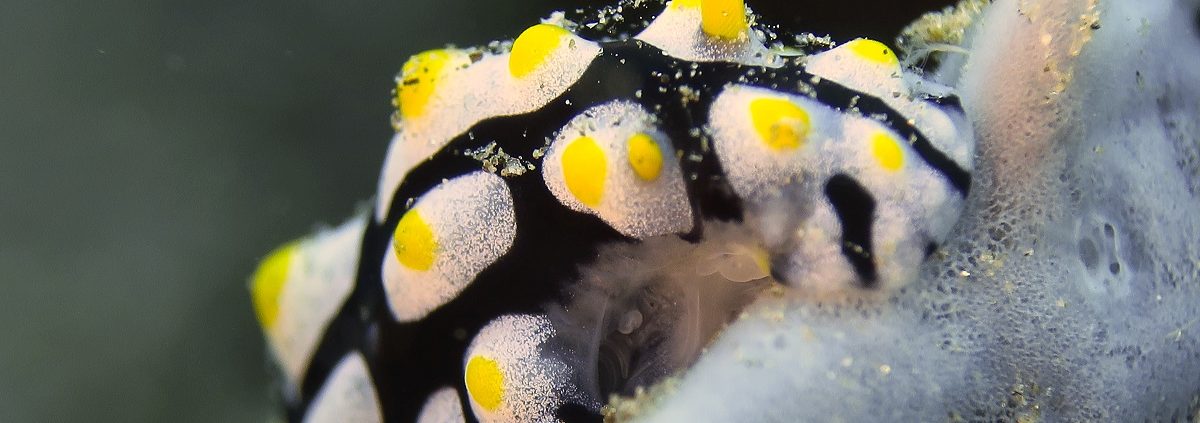
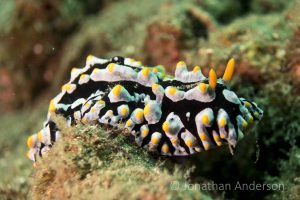
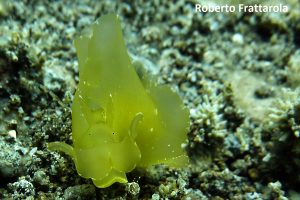
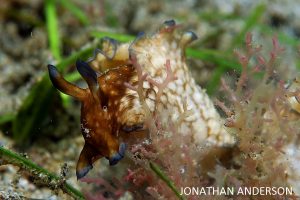
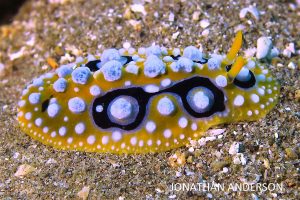


Love these articles.. super interesting on top of fabulous photos!!!